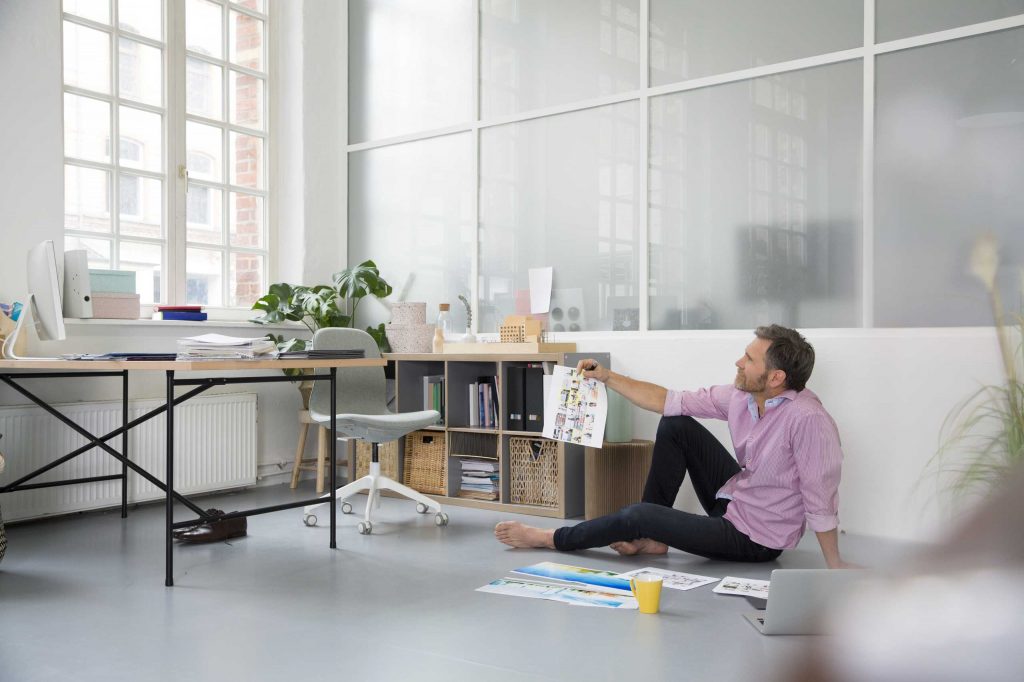We often blame ourselves for broken habits. “I should focus more.” “I need to rest better.” “I’m not disciplined enough.”
But what if the real issue isn’t you — it’s your space?
Your environment is constantly shaping your behavior, often without you realizing it. And in a home where work and life blend, the way your space is designed either supports your habits — or silently works against them.
The good news? You don’t need willpower. You need intentional design.
Let’s explore how creating the right environment helps you form daily routines that actually stick.
1. Behavior Follows Environment
It’s a basic truth of psychology: we do what’s easiest to do.
If your workspace is messy, your brain hesitates before starting.
If your rest corner is hidden behind laundry piles, you never sit there.
If your tools for creativity are buried in a drawer, your ideas stay stuck.
But change the space — and the behavior follows.
- Place your journal where you see it = you write more
- Keep your tea mug by the kettle = you hydrate more
- Light a lamp at the same time each night = you unwind faster
When your home makes the right action the path of least resistance, your habits grow naturally.
2. Create “Habit Anchors” in Your Zones
Each space in your home can be a prompt — a physical signal that reminds you what should happen there.
We call this anchoring.
For example:
- A yoga mat in view reminds you to stretch
- A wall calendar above your desk reminds you to plan
- A cozy blanket on the chair invites daily downtime
- A closed laptop at 7 PM signals the end of work
You don’t need words. You need cues. The more your environment speaks your habits, the less your brain has to remember them.
3. Morning and Evening: The Most Powerful Zones
Your first and last hours at home matter more than anything. They frame your mindset, energy, and focus.
Morning Flow Design
- A well-lit corner with minimal clutter = better start
- Place your planner and glass of water next to each other
- Keep digital devices outside the zone until you’ve grounded yourself
Evening Wind-Down Design
- Use warm light, soft textures
- Store away anything associated with work
- Keep a dedicated shelf or tray for rituals: a candle, book, calming tea
These intentional zones don’t just look peaceful — they create peace.
4. Designing for Energy — Not Just Looks
A space can look beautiful and still be draining. Why?
Because true comfort is not just visual — it’s energetic.
Ask yourself:
- Does this area invite me in or overwhelm me?
- Do I know exactly what I do here, or does it confuse my rhythm?
- Does this space reset me or keep me wired?
When design focuses on energy flow and daily use — not just decoration — it becomes a silent partner in your well-being.
5. Home Habits You Can Build Through Design
With small, focused changes, you can support key areas of your life:
For Focus:
- Clear a desk space
- Keep a “start work” ritual item: lamp, timer, or notepad
- Remove distractions visually
For Rest:
- Dim lights at the same time each night
- Use scent to mark transition (lavender, cedar)
- Keep tech out of reach
For Movement:
- Leave a resistance band or mat visible
- Use open space as an invitation
- Keep equipment portable and light
For Creativity:
- Pin inspiration where you can see it
- Dedicate one shelf or box for spontaneous ideas
- Sit by a window or natural light
Each zone, each item, each visual — it all tells a story. Make sure your home is telling the right one.
6. What You’ll Learn with Work-Life Home Design
In our course, we help you:
- Map your energy highs and lows throughout the day
- Design micro-zones that match your real life
- Build systems that support behavior (instead of punishing it)
- Create a personal rhythm — from morning to night
You’ll also get downloadable habit prompts, visual planning tools, and design ideas for real homes — not just ideal ones.
Final Thought: Your Home is a Habit Engine
Willpower fades. But space stays.
When your home is aligned with your goals, discipline becomes unnecessary. You want to do what feels natural — and that’s exactly what good design makes possible.
Routines aren’t built by force. They’re built by flow.
Let your home lead the way.

